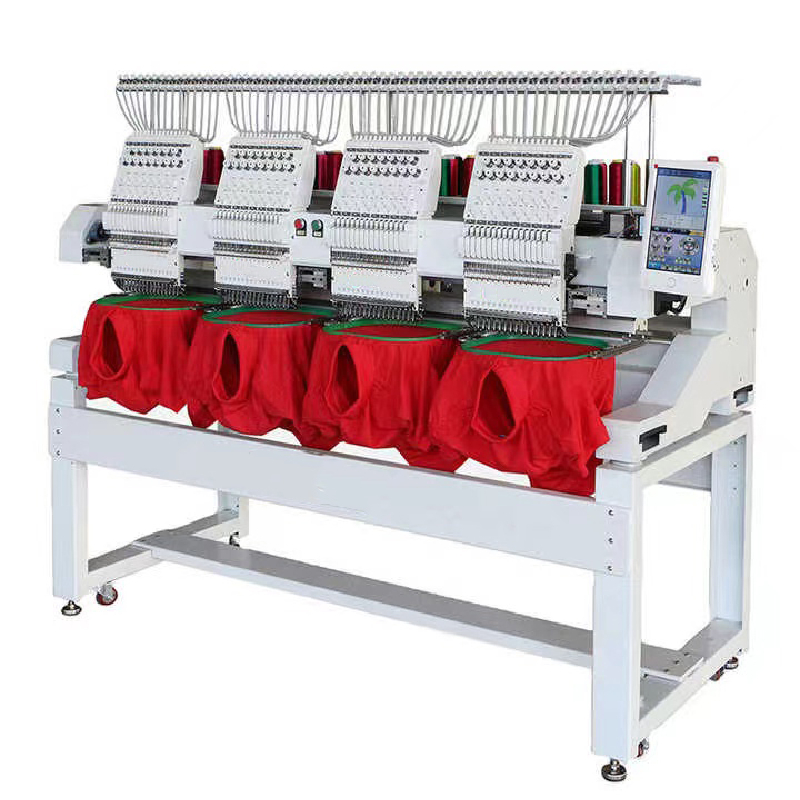Dec . 11, 2024 09:54 Back to list
Factory Specializing in Multi-Head Embroidery Machines and Equipment Manufacturing
Exploring the World of Multi-Embroidery Machine Factories
In the realm of textile and apparel manufacturing, the importance of efficiency and creativity cannot be overstated. One significant advancement that has greatly enhanced the capabilities of garment production is the multi-embroidery machine. These intricate machines revolutionize how designs are stitched onto fabric, making them an indispensable tool for factories across the globe.
What is a Multi-Embroidery Machine?
A multi-embroidery machine is designed to simultaneously stitch multiple designs or layers of embroidery in rapid succession. Typically equipped with several needles and various thread colors, these machines allow for intricate patterns and designs to be produced efficiently. With the capability to handle everything from simple monograms to complex designs involving multiple thread colors, multi-embroidery machines have transformed the way manufacturers approach embroidery.
The Benefits of Multi-Embroidery Machines
1. Increased Production Speed One of the most significant advantages of multi-embroidery machines is their ability to enhance production speed. With multiple needles working at once, factories can produce large quantities of embroidered goods in a fraction of the time it would take using traditional single-needle machines.
2. Cost Efficiency By streamlining the embroidery process, manufacturers can reduce labor costs and minimize downtime. The ability to produce high volumes quickly means that businesses can meet market demands more effectively, leading to increased profitability.
3. Quality Consistency Multi-embroidery machines are designed for precision. The computerized technology allows for the same pattern to be replicated numerous times without any variance in quality. This ensures that every product meets the standards expected by consumers, thereby enhancing brand reputation.
4. Versatility These machines can work with various fabrics and can handle different types of embroidery, from thick denim to lightweight chiffon. This versatility allows factories to cater to a diverse range of markets, from sportswear to formal attire.
5. Customization In today's market, personalization is key. Multi-embroidery machines facilitate custom designs, allowing manufacturers to offer unique products that stand out in a saturated market. This capability is especially valuable in industries like fashion and promotional goods, where individual branding can make a significant difference.
The Manufacturing Process in Multi-Embroidery Factories
multi embroidery machine factory

At a multi-embroidery machine factory, the workflow typically follows a systematic approach
1. Design Creation The process begins with the creation of designs, often using specialized software. Designers plot out the stitches, colors, and sequences to ensure the final product meets the desired specifications.
2. Machine Setup Once the design is finalized, the multi-embroidery machine is set up with the appropriate threads and configurations. This involves threading multiple needles, ensuring proper tension, and adjusting the machine settings for the specific fabric.
3. Production Run With everything in place, the machine begins the production run. Depending on the complexity of the design and the number of items being produced, this phase can range from a few hours to several days.
4. Quality Control Throughout the production process, quality control measures are implemented. This includes monitoring the output for any discrepancies or defects, ensuring that every item meets the factory's quality standards.
5. Finishing Touches After the embroidery is completed, the finished products undergo additional processes such as cutting, weeding (removing excess material), and any necessary ironing or steaming to ensure they are retail-ready.
Challenges Faced by Multi-Embroidery Machine Factories
Despite their many advantages, multi-embroidery machine factories face several challenges
- Maintenance and Downtime Keeping machinery in optimal condition is crucial, as downtime can lead to significant losses in productivity. - Skill Gap Highly skilled operators are required to manage these advanced machines, and finding individuals with the right expertise can be challenging. - Market Competition As more manufacturers adopt this technology, competition increases, necessitating a focus on innovation and unique offerings.
Conclusion
The multi-embroidery machine factory represents a remarkable fusion of technology and creativity. By embracing these advanced machines, manufacturers can significantly improve their operational efficiencies while delivering high-quality, customizable products. As the textile industry continues to evolve, the role of multi-embroidery machines will undoubtedly become even more pivotal in shaping the future of garment production.
-
Affordable 15-Needle Embroidery Machine with GPT-4 Turbo
NewsAug.02,2025
-
Affordable Commercial Embroidery Machines for Sale
NewsAug.01,2025
-
Top AI Embroidery Machine Manufacturers | GPT-4 Turbo Tech
NewsJul.31,2025
-
Affordable Computer Embroidery Machines | Best Prices
NewsJul.31,2025
-
Cheap T Shirt Printing Embroidery Machine with Multi Needle Efficiency
NewsJul.30,2025
-
High-Quality T Shirt Embroidery Machine – Multi & 12/15 Needle Options
NewsJul.30,2025

Copyright © 2025 Xingtai Pufa Trading Co., Ltd All Rights Reserved. Sitemap | Privacy Policy
